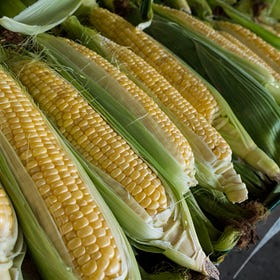Non-Alcoholic Fatty Liver Disease Is Easy To Develop. We Don't Want To Get There, However.
We can look at how geese are force-fed for foie gras production as a start.
There are many delicacies around the world that do cater to the well-heeled clientele. In France, we do see how geese are bred for the purpose of killing them and extracting their fatty livers — which are more commonly known as foie gras. A PETA article commented that
To produce “foie gras” (the French term means “fatty liver”), workers ram pipes down the throats of male ducks twice each day, pumping up to 2.2 pounds of grain and fat into their stomachs, or geese three times a day, up to 4 pounds daily, in a process known as “gavage.” The force-feeding causes the birds’ livers to swell to up to 10 times their normal size. Many birds have difficulty standing because their engorged livers distend their abdomens, and they may tear out their own feathers and attack each other out of stress.
The birds are kept in tiny cages or crowded sheds. Unable to bathe or groom themselves, they become coated with excrement mixed with the oils that would normally protect their feathers from water. One Newsweek reporter who visited a foie gras factory farm described the ducks as “listless” and “often lame from foot infection due to standing on metal grilles during the gavage.” Other common health problems include damage to the esophagus, fungal infections, diarrhea, impaired liver function, heat stress, lesions, and fractures of the sternum. Some ducks die of aspiration pneumonia, which occurs when grain is forced into the ducks’ lungs or when birds choke on their own vomit. In one study, birds force-fed for foie gras had a mortality rate up to 20 times that of a control group of birds who were not force-fed.
In France, the ortolans are an endangered species of songbird that is an expensive delicacy — so endangered that it’s illegal to actually be eating them any longer:
The fragile songbird from France, which weighs less than an ounce and is about the size of your thumb, was served exclusively to royalty and rich gourmands until it became illegal in 1999. The procedure for preparing ortolan has long been controversial. They are kept in darkness for weeks or are blinded, which causes the bird to gorge on grains and grapes and become fat, the key ingredient to its decadence when cooked. The birds are then thrown alive into a vat of Armagnac brandy (which both drowns and marinades them), then roasted. Ortolans are meant to be eaten feet-first and whole, except for the beak.
And of course, eating them does provide a “religious experience”:
“I don’t know about you but I just had a religious experience,” Wagner says, after popping the bite-sized fowl into his mouth whole. “At the climax I felt the crack of its little rib cage, then the hot juices rushing out, down my gullet. Sublime.”
While we may be enraged at the inhumane methods of preparing these delicacies, we do know that the rich and the elite can afford to pay for these, and that’s why they still exist to this day.
Because all these forbidden foods elicit feelings and emotions that the common roast chicken cannot provide. We shake our heads at the silent crime rings that the elite engage in, because somehow they’re able to get away with doing such things while the commonfolk get incarcerated for less.
But that’s off-topic. The focus is to look at how geese develop fatty livers, because that also gives an insight into how humans can develop fatty livers.
One thing in common with the geese and the ortolans is that they are fed an ultra-rich diet of grains. That constant overfeeding of carbohydrates forces their liver to become fat, and from there we get that fatty liver known as foie gras.
In fact, that’s what an overconsumption of carbohydrates can do to us.
People who drink too many sugary drinks do end up with a higher risk of developing non-alcoholic fatty liver disease (NAFLD). The overconsumption of grains can also lead to NAFLD — much like how geese are being force-fed for the sake of foie gras production.
One thing is for sure — the overconsumption of these carbohydrates isn’t going to be that good for our health.
The Sugar Involved With Our Declining Health Is Great For Business.
Wherever we go today, we are bombarded by advertisements for various sugar-rich foods, much like how scantily dressed women are seen in many different advertisements today.
Because we’d be more likely to develop fatty livers as a result — and when our livers become overly fatty, there are other things that can go wrong within our body very easily.
Unfortunately, we do also have to look into consumer psychology and marketing tactics. Many people are lured by marketing advertisements to go for these carbohydrates. It is so easy to get our hands on such products these days, whether we’re on a food delivery app or in a supermarket. Discounts, free shipping, highly visible and attractive packaging, advertisements - all of these are calling out to the people around them to buy them.
It’s a shame, really, when economic profits are so much more heavily prioritized than human health is.
But at the same time, too, human health is turned into a political matter, especially in the United States, where corn is a heavily subsidized crop:
Obesity Is More Of A Political Issue Than It Is About Science.
Corn is a ubiquitous crop that is described to be a “lucrative and heavily-subsidized” crop. One can see large swathes of farmland containing corn crops as they drive through the sparsely populated rural areas of the Midwestern USA, which I saw as I traversed the I-57 between Chicago and Champaign, IL.
And the problem is that these subsidies won’t really go away anytime soon. There would be a deluge of corn, which can then be used to produce cheap sweeteners such as high fructose corn syrup (HFCS). HFCS, of course, has been the predominant sweetener being used for sweetened beverages in the USA for a very long period of time.
Whether we’re overconsuming grains or the sweeteners that are derived from these grains, the problem is that we’ll end up accumulating fat in our livers, which ultimately results in a higher risk of developing NAFLD, and that isn’t the best thing for us at all.
But unfortunately, how many of us can point towards a certain type of processed carbohydrate product as a comfort food that we would gravitate towards unfailingly?
I cannot say I’m immune to them. I find potato chips and ice cream very comforting myself. But if I cannot stop purchasing them, I’d eventually find myself going down the pathway towards NAFLD - and I wouldn’t really want that to happen to myself at all.
Do feel free to share this article and hit the “subscribe” button to get more updates about the science concepts in nutrition and health, all deconstructed nicely for your convenient perusal!




